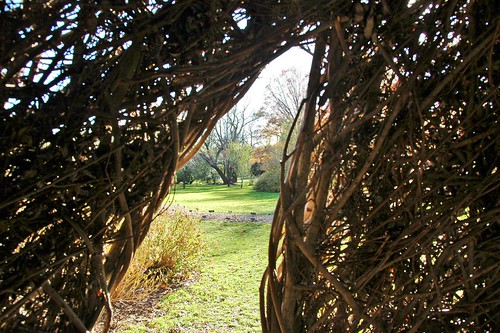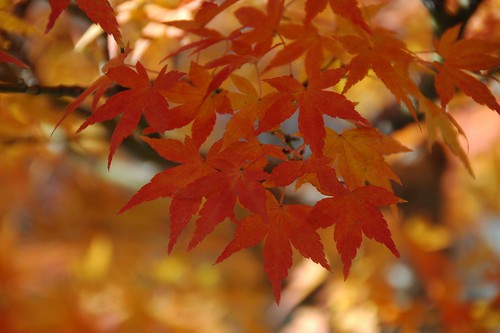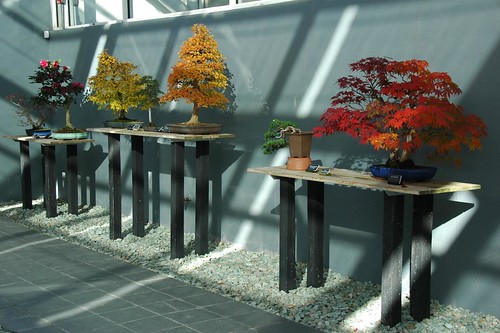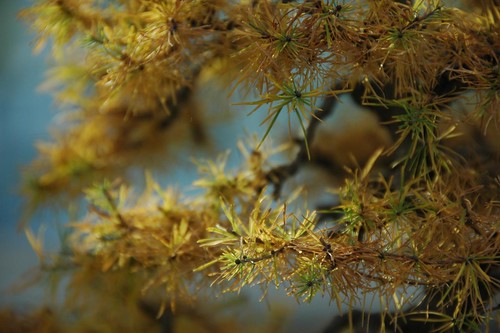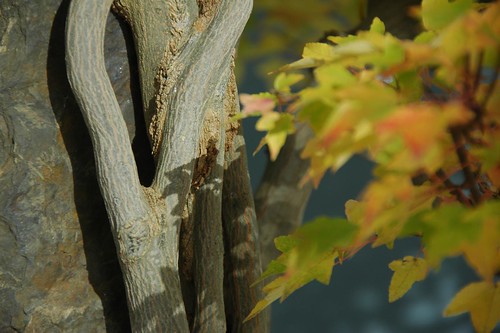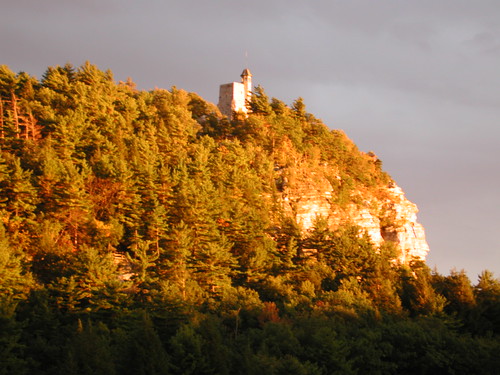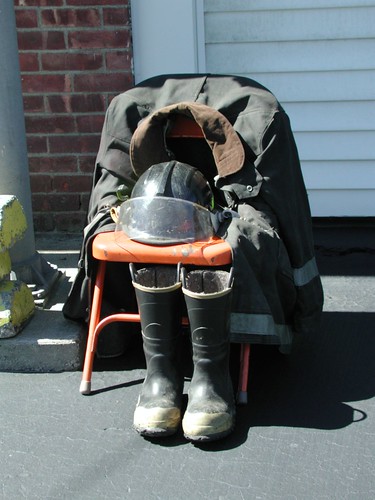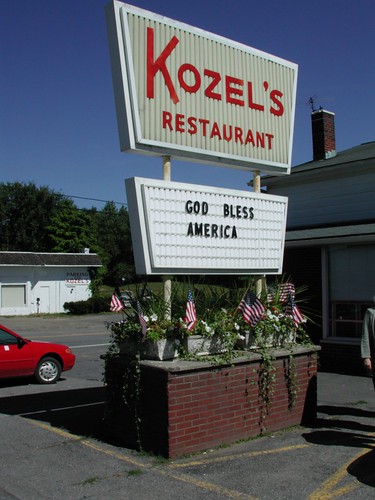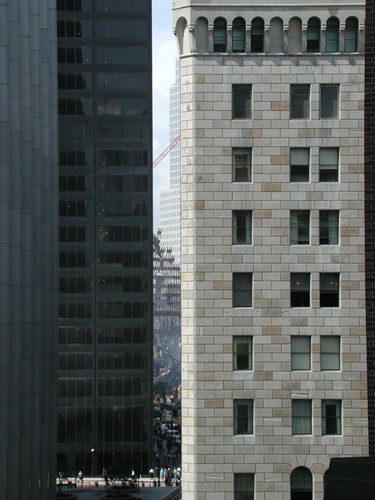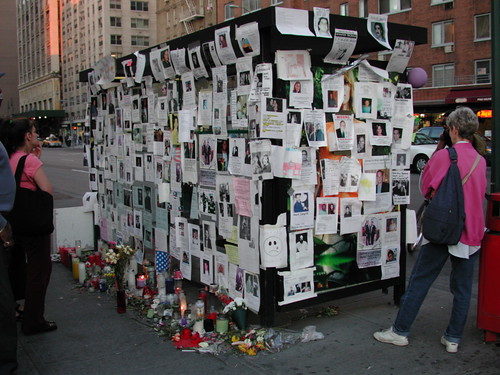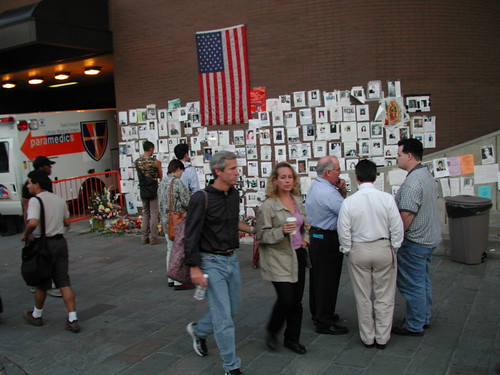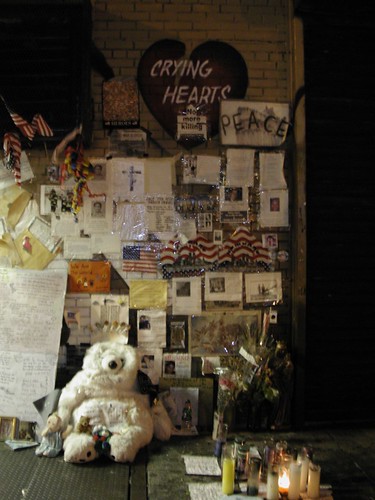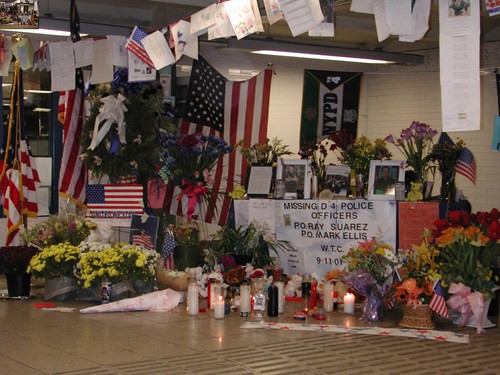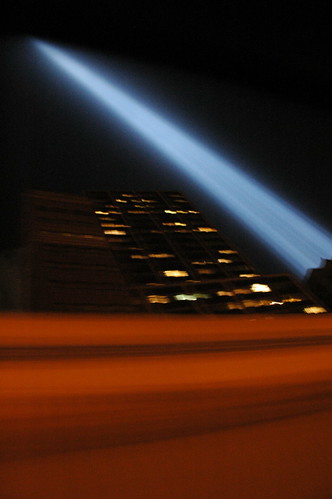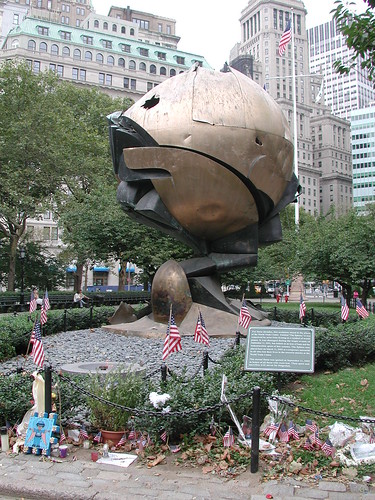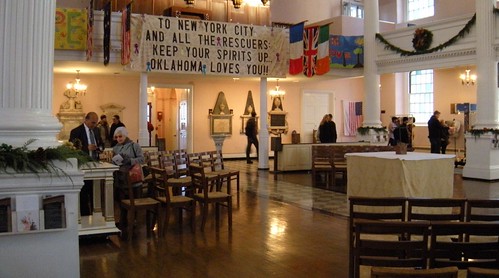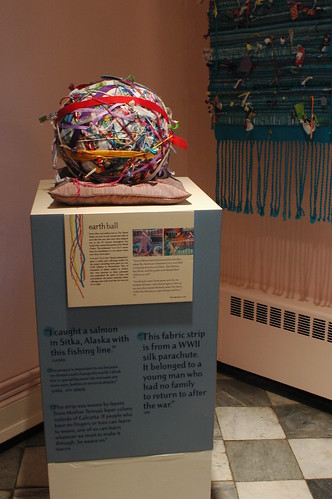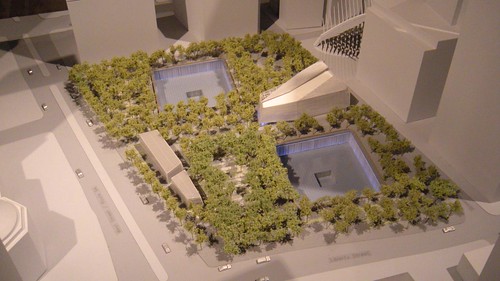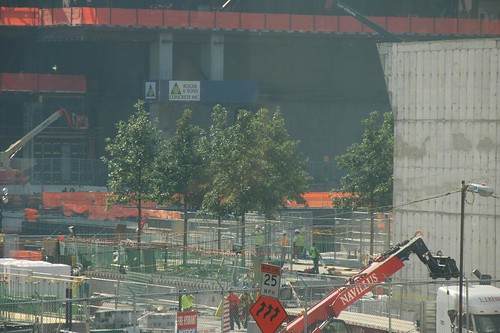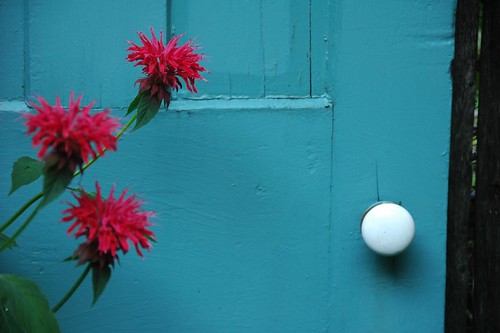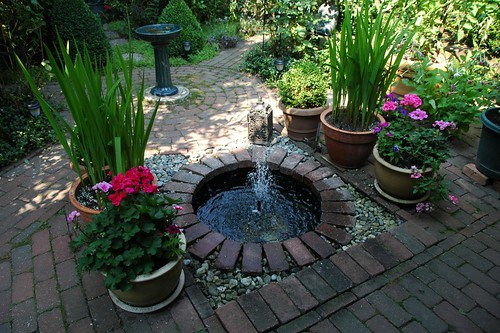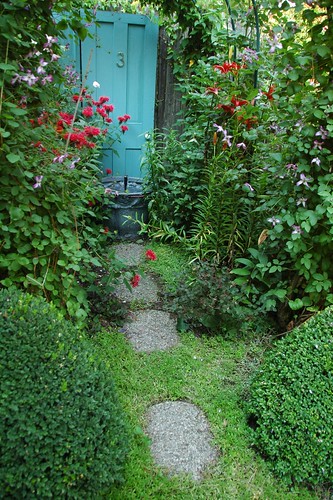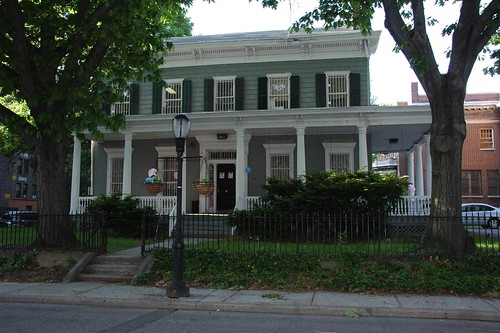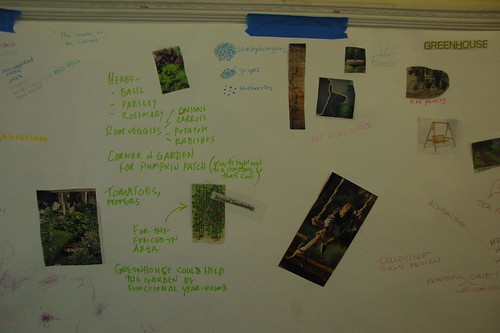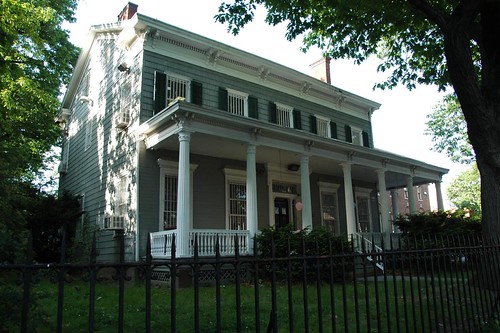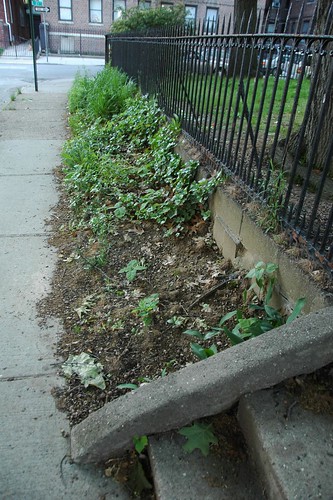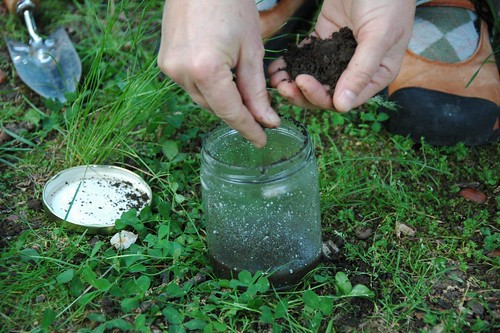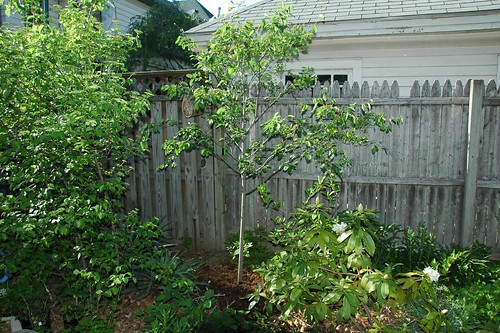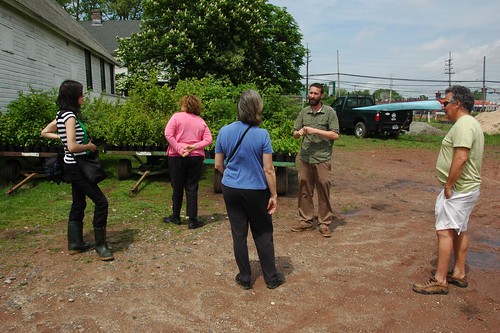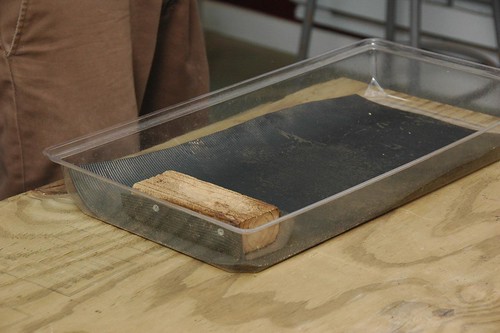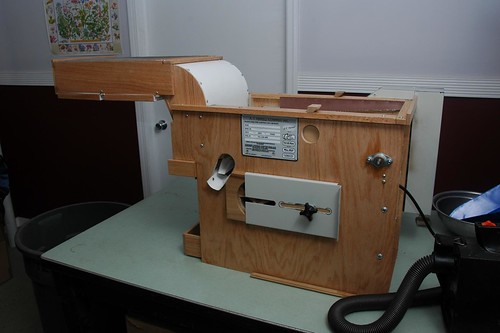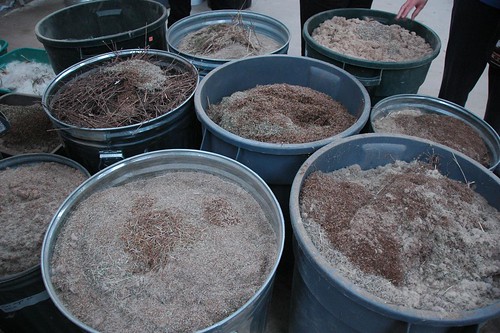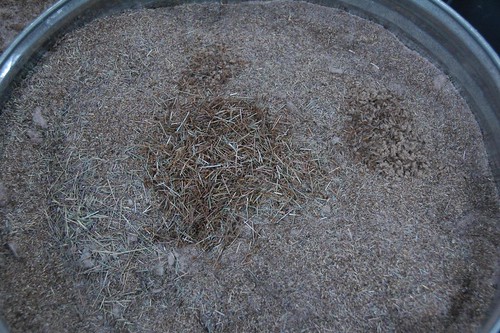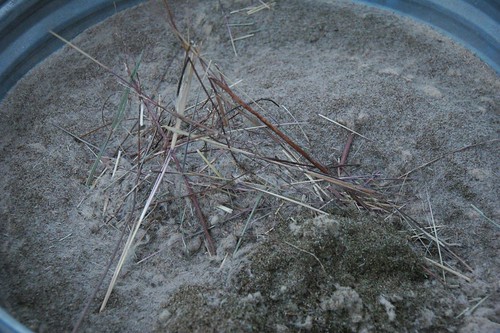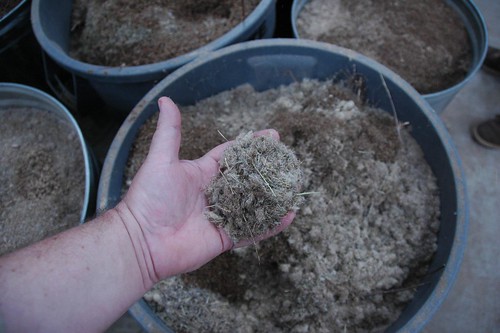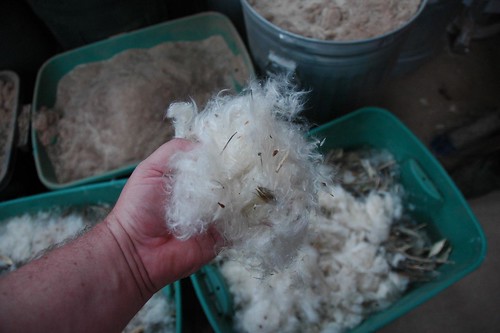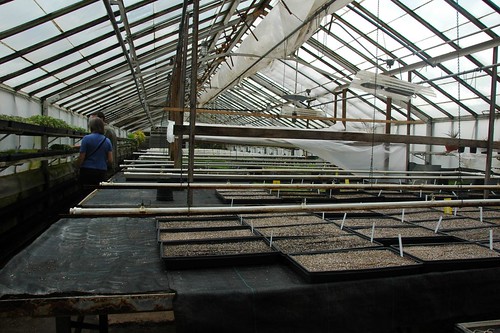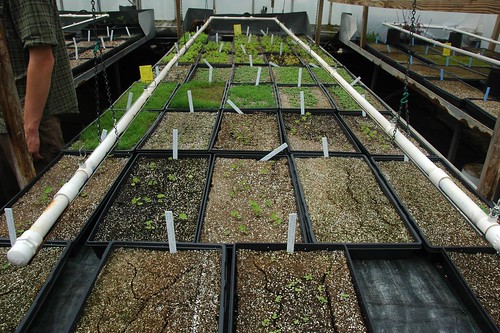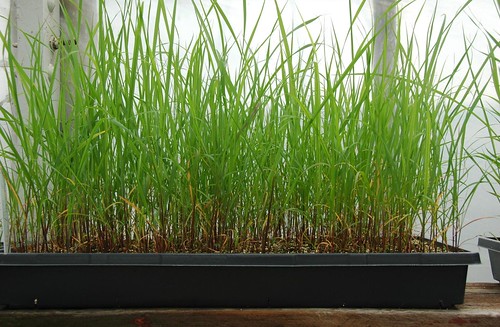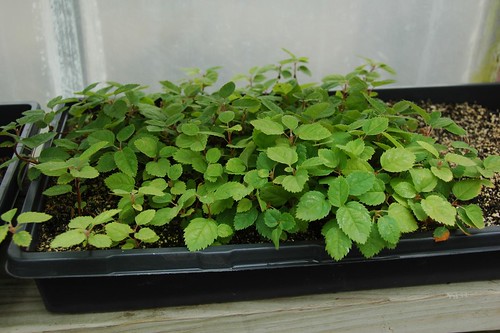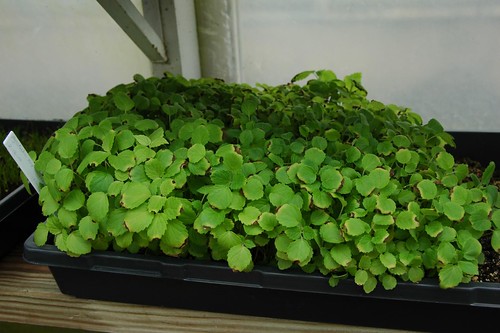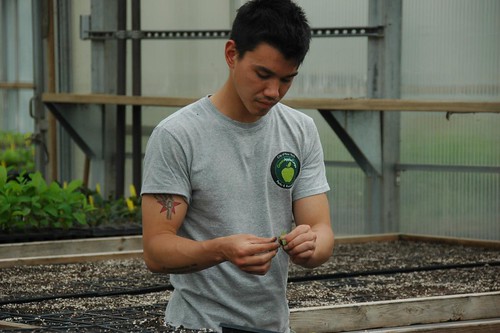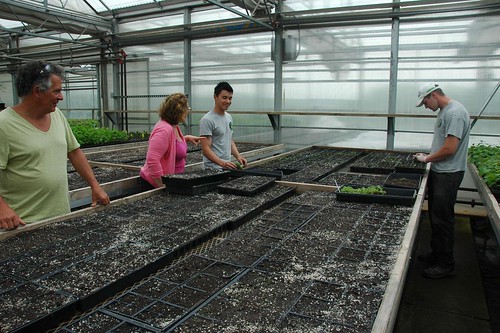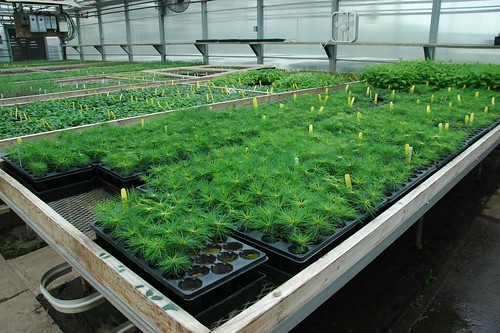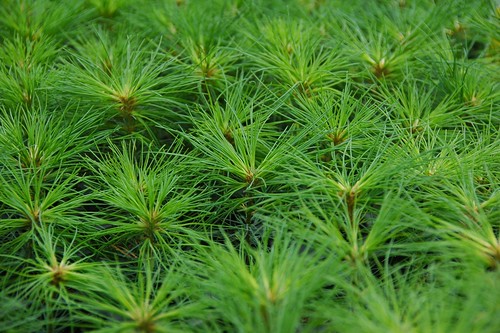2010-07-31: Added base plan, drawn to scale, of the site.
2010-07-26: Added transcribed notes from the workshop materials.
On June 6 and June 16, Sustainable Flatbush and the Flatbush Reformed Church held two Community Visioning Workshops for a new communal garden to be created on the grounds of the Church. On Sunday, August 1, 3pm, we invite community review of proposed designs.
Participants of the second community visioning workshop introduce themselves on the grounds of the future garden.
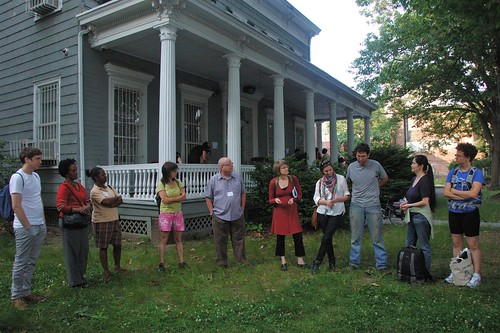
We invite design proposals from the community. This post has basic information about the site, including measurements and general conditions, as well as the notes from the workshop sessions, to inform your designs.
Location
The main area available for the new garden is the front lawn of the Parsonage of the Flatbush Reformed Church. This building is at the corner of a dead-end court, Kenmore Terrace, and lightly-traveled through-street, East 21st Street.
View Larger Map
Here’s how the site looks from the corner. Kenmore Terrace is in the foreground, East 21st Street is on the left. The view is looking slightly east of north.
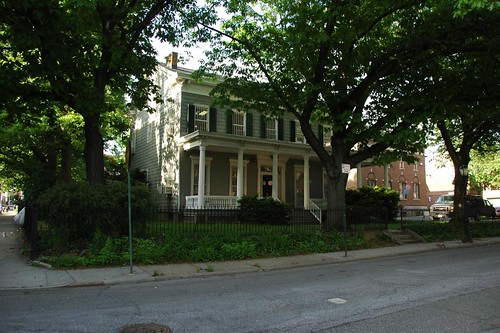
Dimensions
Here’s the base plan, drawn to scale at 3/16″ = 1 foot, of the site. Kenmore Terrace is at the bottom of the plan, East 21st Street on the left, the parking lot on the right. North is roughly up.
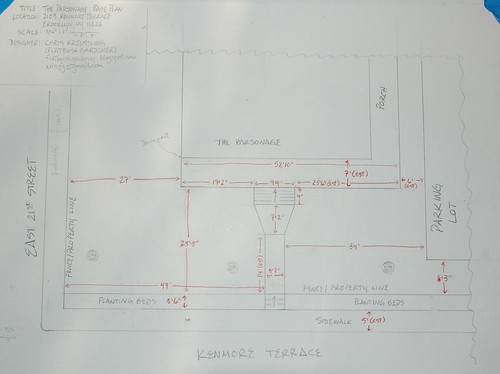
The front porch is nearly 53′ long! It’s just over 25′ from the fence along Kenmore Terrace to the front of the porch, and 27′ from the East 21st Street fence to the side. It’s nearly 85′ from the parking lot to East 21st. The sidewalk bed along Kenmore Terrace is 3’6″ deep. The bed between the fence and the parking lot is 8’3″ deep.
Here is my sketched, unscaled, plan of the site, drawn from the perspective of the front porch of the Parsonage. Kenmore Terrace is at the top of the plan, the parking lot is on the left, East 21st on the right.
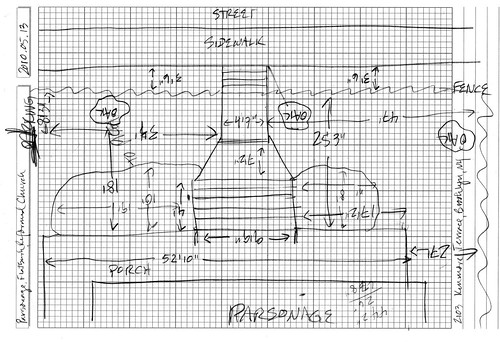
Conditions
The plan notes the approximate locations of three of the large oak trees around the perimeter of site, just inside the fence. They provide high shade over the entire property. The sidewalk beds along Kenmore get some sun during the middle of the day, enough, at least, for some Hemerocallis to bloom there.
Soil tests revealed high levels of metals in the soil, too high to grow food directly in the soil. There are ample opportunities for raised beds across the site. A second area, with full sun next to the parking lot, will be used for raised beds.
Transcription
These notes were transcribed from the Workshop collages.
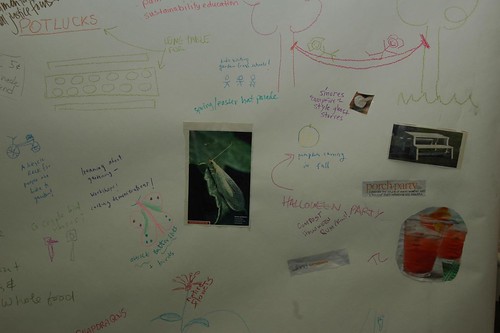
EDUCATION PROGRAMS:
produce, herbs and food
– children-run MINI-CSA for neighbors (like a lemonade but w/ produce)
– COOKING CLASSES/demos *** (on nutrition *)
– medicinal HERB WORKSHOPS
art and culture
– ART WORKSHOPS
– art & CULTURE CURRICULUMS
biking
– BIKE riding LESSONS in parking lot
– BIKE MAINTENANCE workshops
youth-oriented programming
– EDUCATION PROGRAMS – interface w/ local charter school & public schools
– summer/ weekend educational for kids
– GARDEN VISITS- kids visiting garden from schools
gardening programming
– GARDENING 101 info sessions/workshops **
– HAITIAN COMMUNITY SHARING of traditional farming knowledge
– HOW-TOs to encourage others to use their BACKYARD
– SUSTAINABILITY EDucation
– SOLAR installation – demo/workshop when it’s installed
– VERMICOMPOST – how to workshops
methods for running these programs:
– programs out of parsonage
– adaquate documentation of each step taken online
– how to guide for those in other communities looking to start their own gardens and/or gardening tips for those who want to start backyard gardens in the area (similar weather and growing conditions)
EVENTS
theater
– Small THEATER performance on the porch – with a garden or food theme (w/ and for kids) ie. Little Red Hen, Peter Rabbit
– showcase edible plants – “PLANT OF THE WEEK” idea, educate community members about plants they can eat, recipes for preparation, fun facts, etc
food and drink
– monthly POTLUCKS ***
– BBQs w/ veggie foods
– TEA PARTIES! (mint & ginger) **
– mint LEMONADE STAND (5 cents)
for the garden
– LEAF COLLECTION in the fall
– PLANT SWAP
– collective SIGN DESIGN
fun
– non-amplified MUSIC (jazz, blue-grass, brazilian, steel drums)
– ACUPUNCTURE
– BOOK CLUB (w/ environmental social justice focus)
trips
– FARM TRIP
seasonal programming
– spring/easter HAT PARADE
– campfire style GHOST STORIES (smores, etc)
– PUMPKIN carving in the fall
– halloween party (compost halloween pumpkins)
getting to know you
– porch party
– MEET my neighbors
methods
– intergenerational gardening
– gatherings
GARDEN AREAS:
by plants
– Fragrant garden
– butterfly garden ***
– kids garden ** (and education programs)
– discovery gardens ** (tactile plants **)
– meditation bench in quiet leafy spot
– cactus/low water garden
– polinator garden in front of parsonage
for programming
– area for potluck/picnics
– long table for potlucks
– benches & tables for gathering **
art
– murals
– sculptures
for garden techniques
– corner of garden for pumpkin patch (also it’s right next to a cemetery so that’s cool!)
– vertical gardening for the fenced in areas **
– maze path lined w/ flowers
– path (curvy, etc) **
– tree beds – protect trees we are working around
GARDEN INFRASTRUCTURE:
garden-based infrastructure and decor
– beehive **
– birdhouse *****
– greenhouse ***
– sundial
– solar lighting/lanterns **
– water fountain *** (solar powered ones *)
gardening method infrastructure
– rain water catchment ***
– composting
for fun
– treehouse*
– swing **
– hammock
for transport
– bike parking **** (bike racks)
for entryway
– beautiful welcoming gate **
– sign on gate w/ info on how to join
– arbor over entrance
etc
– recycling on church grounds
– wind power
– solar power **
– human power
– whimsy
walls
– living wall
– a living structure – like a small yurt from woven willows that are still growing and changing – the kids can play in it
– sound barrier
GARDEN TECHNIQUES:
methods
– lasagna gardening
– 3 sister type planting (corn, beans, root veggies)
– companion planting as a model for small space gardening – how to have a garden grow food for your family in a small space
– permaculture
– heal the soil
– container gardening
– recycled containers as planters (ie. pickle barrel) – drill holes for drainage
– raised beds for food
– cold frames (windows work! “or so i’ve heard”)
fertilizing
– organic fertilizers (garden plenty, liquid kelp spray, sea rich)
– organic **
keep
– seed library – seed saving
THINGS TO GROW:
herbs *
– food herbs ***
– basil *
– medicinal herbs ** (ie. comfrey, hyssop, lavender)
– parsley **
– rosemary **
– cilantro
– thyme
fruits
– grapes*
– berries
– fruit trees **
– avocados
– strawberries
– pink lady apples
– peaches
– cherries
– watermelon
– apples
– grapes
– blueberries
vegetables
– pumpkins
– squash*
– brussel srpouts
– eggplant
– artichoke
– salad greens*
-radishes
– beans
– chickpeas
– root veggies (onions ***, carrots ***, potatoes ***, radishes)
– tomatoes **
– peppers
– garlic
– scallion
_ ginger **
– any green leafed vegetables
– kale
– legumes
– swiss chard
– zuchini
– bell pepers
– leeks
– green beens
– tomatoes
– hot pepers
– lettuce
– cucumbers
– wine harvesting
flowers
[goo.gl]
Related Content
Flickr photo set
June 16: Community Visioning Workshop for a new Communal Garden
Help Envision a New Garden: Sunday, June 6
Links
Garden Visioning Session report, Jeremy Teperman, Sustainable Flatbush, 2010-07-01
Flatbush Reformed Church
CAMBA
Flatbush Farm Share CSA

